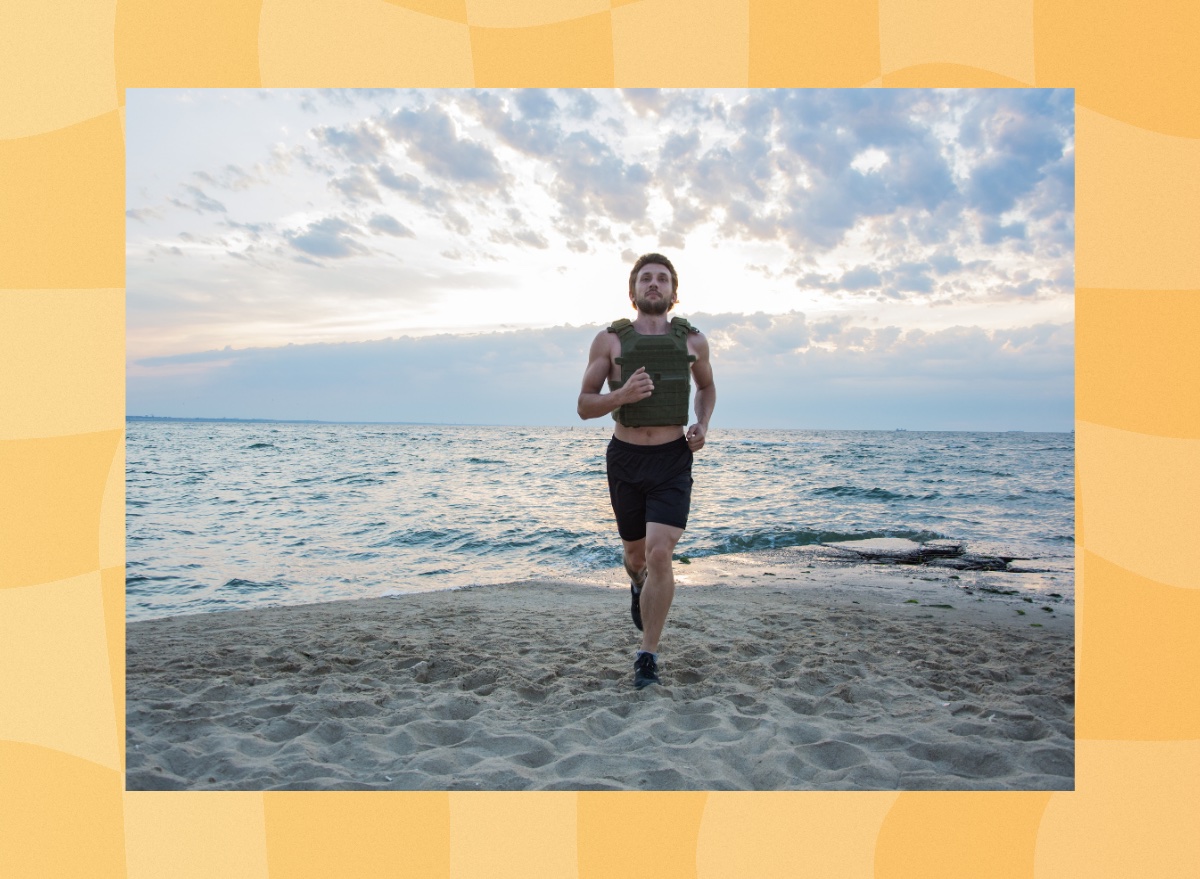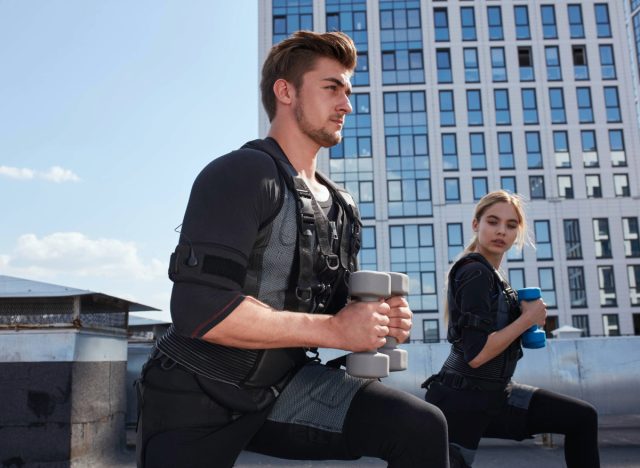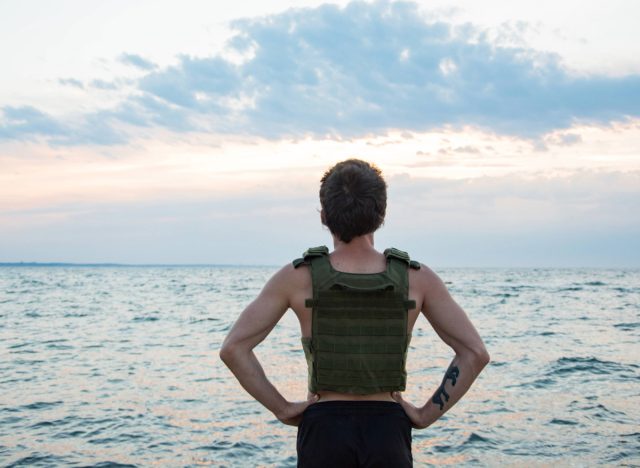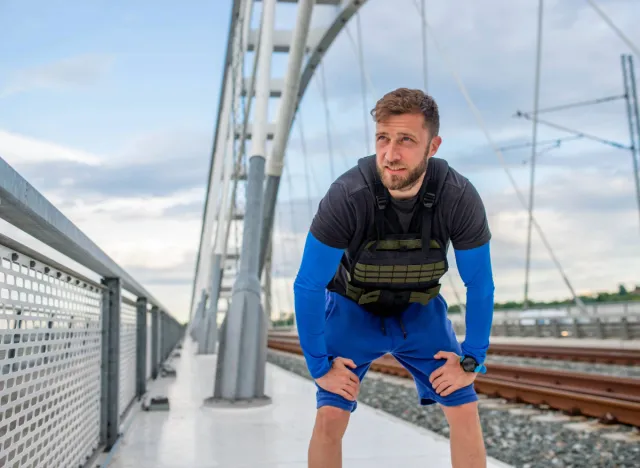The 10 Pros & Cons of Walking With a Weighted Vest

Walking is one of the most accessible and enjoyable forms of exercise. Imagine turning that walk into a more intense, strength-building workout simply by adding a weighted vest. Weighted vests are like hidden gems for fitness enthusiasts, adding an extra challenge to your routine without requiring fancy equipment or a gym membership. They're not just for elite athletes or HIIT lovers; anyone looking to boost their workout can benefit from this simple yet effective tool. In this article, I'm outlining the 10 pros and cons of walking with a weighted vest.
When you strap on a weighted vest, you turn your body into a portable gym. The added weight makes your muscles work harder, increasing your strength, endurance, and cardiovascular health. But that's not all—the benefits of working out with a weighted vest extend beyond physical gains. It can also enhance your balance, coordination, and bone density. It's like upgrading your fitness routine to the next level, and the best part is you can do it anywhere—from the park to your living room.
Before you run out and buy a weighted vest, it's essential to understand that while there are many benefits, there are also some downsides. As a sports performance coach with years of experience helping athletes and everyday fitness enthusiasts achieve their goals, I've seen the good, the bad, and the sweaty when using weighted vests—shoutout to CrossFit.
In this article, I'll walk you through the 10 pros and cons of walking with a weighted vest so you can make an informed decision and get the most out of your workouts.
Pros of Walking With a Weighted Vest
Before getting into the potential drawbacks, let's start on a positive note. Here are 10 compelling reasons why you should consider incorporating a weighted vest into your walking routine.
1. Enhanced calorie burn
When you walk with a weighted vest, your body has to work harder to move the extra weight. This increased effort translates to a higher calorie burn, making your walks more efficient for weight loss. It's like turning up the intensity without sprinting or running, which can be easier on the joints while still delivering a robust workout.
2. Improved cardiovascular health
Adding weight increases your heart rate more than regular walking, providing a more intense cardiovascular workout. This can improve heart health, increase stamina, and better cardiovascular fitness. It's an excellent way to challenge your heart without picking up the pace.
3. Strength building
A weighted vest adds resistance to your walk, which can help build strength in your legs, core, and upper body if the vest is fitted correctly. Over time, this resistance training can lead to stronger muscles and better muscle tone, turning a simple walk into a full-body workout.
4. Increased bone density
Walking with added weight can stimulate bone growth and increase bone density. This is particularly beneficial for older adults or those at risk of osteoporosis. The extra load encourages your bones to adapt and strengthen, reducing the risk of fractures.
5. Improved posture
Wearing a weighted vest can enhance your posture by engaging your core muscles and encouraging a more upright stance. The added weight requires you to stabilize your body, promoting a straighter spine and better alignment as you walk.
6. Enhanced balance and coordination
The extra weight of a vest challenges your balance and coordination, making your walk more complex and engaging. This can be especially useful for athletes or anyone looking to improve their proprioception and overall body awareness.
7. Versatility in training

Weighted vests are versatile and can be used for various activities beyond walking, such as running, hiking, or bodyweight exercises. This makes them valuable to any fitness routine, providing multiple ways to enhance your workouts.
8. Better endurance
Walking with a weighted vest can improve your endurance over time. As your body adapts to the extra weight, you'll find that your stamina for other activities also enhances. It's like giving your endurance a turbo boost.
9. Customizable workouts
Weighted vests often come with adjustable weights, allowing you to customize the intensity of your workout. You can start with a lighter load and gradually increase it as your strength and fitness improve, providing a scalable challenge.
10. Convenience

Weighted vests are convenient and can be used almost anywhere. Whether walking around your neighborhood, at the park, or even on a treadmill at home, a weighted vest can easily be incorporated into your routine without additional equipment.
Cons of Walking With a Weighted Vest
While the benefits are impressive, it's important to know the potential downsides. Here are 10 cons of walking with a weighted vest that you should consider before adding one to your fitness arsenal.
1. Risk of injury
One of the main downsides of using a weighted vest is the increased risk of injury. The added weight can put extra strain on your joints, mainly your knees and hips, leading to potential issues like joint pain or even long-term damage if not used correctly.
2. Potential for poor posture
While a weighted vest can improve posture, it can also have the opposite effect if not used correctly. If the vest is too heavy or not fitted properly, it can cause you to hunch forward, leading to poor posture and back pain.
3. Overtraining risk

There's a temptation to overdo it when you start seeing the benefits of walking with a weighted vest. However, overtraining can lead to fatigue, muscle strain, and increased risk of injury. Listening to your body and pushing slowly is essential.
4. Discomfort and chafing
Wearing a weighted vest can sometimes be uncomfortable, especially during longer walks. The vest might rub against your skin, causing chafing or irritation. Proper fitting and wearing appropriate clothing can help, but it's something to be mindful of.
5. Limited use for certain individuals
Weighted vests might not suit everyone, especially those with pre-existing conditions like back or joint problems. It's essential to consult with a healthcare provider before starting to ensure it's a safe option for you.
6. Expense
Quality weighted vests are expensive. While they are a worthwhile investment for many, the initial cost might be a barrier for some people looking to incorporate them into their fitness routine.
7. Not ideal for all environments
Using a weighted vest in hot weather or during very long walks can lead to overheating and excessive sweating. Staying hydrated and considering the environmental conditions before heading out with your vest is essential.
8. Adjustment period
There's an adjustment period when you first start using a weighted vest. Your body needs time to get used to the added weight, and you may experience initial soreness or fatigue. Gradual introduction is vital in avoiding discomfort.
9. Maintenance and durability
Weighted vests require regular maintenance to ensure they remain in good condition. Over time, the weights or vest material might wear out, necessitating repairs or replacement, which can add to the overall cost.
10. Potential for misuse
Without proper guidance, there's a risk of misusing a weighted vest, such as wearing too much weight too soon or not distributing the weight evenly. This can lead to imbalances and increase the risk of injury. Educating yourself on proper usage or seeking advice from a fitness professional is crucial.









